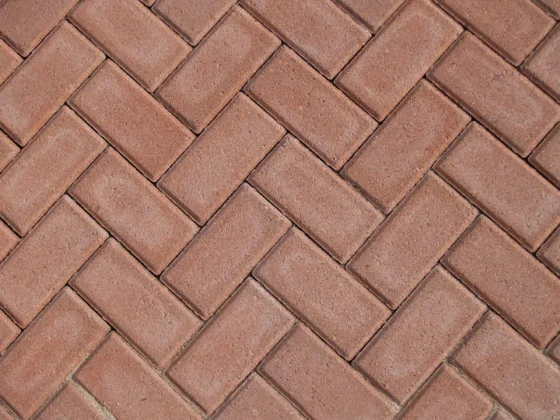Creating a beautiful and functional patio doesn’t have to be expensive. With thoughtful planning and a few creative ideas, you can achieve stunning results on a budget.
In this article, we’ll explore various tips and techniques for affordable landscaping to help you maximize your patio’s potential.
1. Plan Your Space Wisely
Evaluate Your Needs
Before starting your landscaping project, take some time to evaluate how you want to use your patio. Consider whether you need space for dining, relaxing, or entertaining. Understanding your needs will help you make the most of your available space and budget.
Create a Layout
Draw a simple layout of your patio, including the dimensions and any existing features such as doors, windows, and pathways. This will help you visualize the space and plan where to place new elements.
2. Use Affordable Materials
Recycled and Repurposed Materials
Using recycled and repurposed materials is a great way to save money and add unique character to your patio. Look for reclaimed wood, old bricks, or pallets that can be transformed into furniture, planters, or decorative features.
Budget-Friendly Pavers
Pavers are a cost-effective option for creating a patio surface. Concrete pavers are generally more affordable than natural stone, and they come in various shapes, sizes, and colors. You can also mix and match pavers to create interesting patterns and designs.
Gravel and Mulch
Gravel and mulch are inexpensive materials that can be used to define pathways, fill gaps between pavers, or create a low-maintenance ground cover. Both materials are easy to install and provide good drainage.
3. Incorporate DIY Projects
Build Your Own Furniture
Creating your own outdoor furniture can significantly reduce costs. Simple DIY projects, such as building a bench from cinder blocks and wooden planks or crafting a coffee table from pallets, can add functionality and charm to your patio without breaking the bank.
DIY Planters
Make your own planters using items you already have or can find cheaply. Old buckets, tires, or even wooden crates can be transformed into stylish planters with a little creativity and some paint.
4. Choose Low-Cost Plants
Native Plants
Native plants are typically more affordable and easier to maintain than exotic species. They are adapted to your local climate and soil conditions, which means they require less water, fertilizer, and pest control. Plus, they provide habitat for local wildlife.
Perennials
Investing in perennials can save you money in the long run. Unlike annuals, which need to be replaced every year, perennials come back season after season. Look for hardy varieties that thrive in your area.
Seed Starting
Starting plants from seeds is much cheaper than buying mature plants. You can start seeds indoors or directly in your patio planters. Many vegetables, herbs, and flowers can be easily grown from seeds.
5. Add Vertical Elements
Vertical Gardens
Vertical gardens are an excellent solution for small spaces. They allow you to maximize your planting area by growing plants upward instead of outward. You can create a vertical garden using hanging planters, wall-mounted shelves, or even a trellis covered in climbing plants.
Wall Planters
Attach planters to your patio walls or fence to add greenery without taking up valuable floor space. Wall planters can be made from inexpensive materials such as old gutters, shoe organizers, or wooden pallets.
6. Enhance with Lighting
Solar Lights
Solar lights are a cost-effective and energy-efficient way to illuminate your patio. They don’t require wiring or electricity, making them easy to install. Place solar lights along pathways, around seating areas, or in planters to create a warm and inviting ambiance.
String Lights
String lights are an affordable way to add a magical touch to your patio. Drape them across a pergola, along the fence, or around the seating area to create a cozy atmosphere for evening gatherings.
7. Utilize Multi-Functional Elements
Furniture with Storage
Choose outdoor furniture that doubles as storage to maximize space and functionality. For example, benches with built-in storage compartments can be used to store cushions, gardening tools, or other outdoor essentials.
Convertible Furniture
Convertible furniture, such as a table that can be adjusted to different heights or a bench that transforms into a picnic table, is perfect for small patios. These versatile pieces help you make the most of your space.
8. Create a Focal Point
Water Features
A small water feature, such as a fountain or birdbath, can serve as a beautiful focal point for your patio. You can create a simple DIY fountain using a few basic materials and a small water pump.
Fire Pit
A fire pit can be a cozy and inviting addition to your patio. You can build your own fire pit using inexpensive materials such as bricks or cinder blocks. A fire pit not only provides warmth but also serves as a cozy outdoor living space for friends and family.
9. Maintain Your Patio
Regular Cleaning
Keeping your patio clean and well-maintained is essential for preserving its appearance and functionality. Sweep regularly, remove weeds, and clean furniture and planters as needed.
Seasonal Upkeep
Perform seasonal maintenance tasks such as reapplying mulch, pruning plants, and checking for any repairs that may be needed. Regular upkeep will help you avoid costly fixes and keep your patio looking its best.
Conclusion
Achieving a beautiful and functional patio doesn’t have to come with a hefty price tag. By using affordable landscaping techniques, you can maximize your patio’s potential and create an inviting outdoor space. From planning your layout and using budget-friendly materials to incorporating DIY projects and choosing low-cost plants, there are many ways to enhance your patio on a budget. Embrace these tips and get ready to enjoy a stylish and welcoming patio all summer long.












